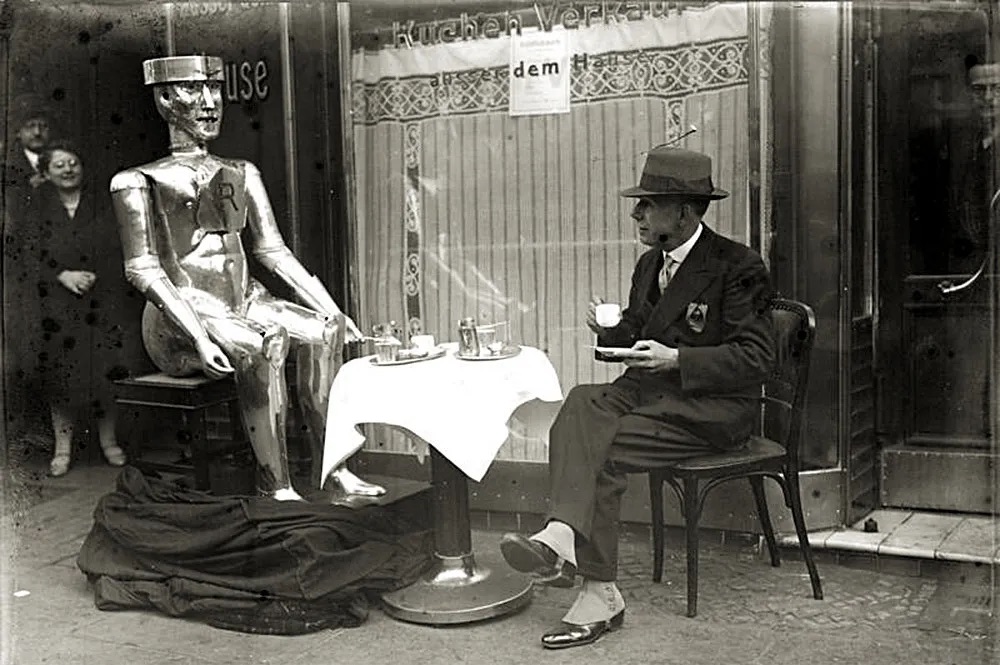“Parents would rather have a tomboy than a sissy”: An Interview with Grayson Perry (2004)
Grayson Perry has been in the news a lot recently, not just for winning Britain’s most prestigious art prize, but also because of that dress. As ever, the public has been curious about men in frocks, but this time, and for the first time since Eddie Izzard graced the stage in a leather skirt, we have been given a look into the very straight world of the transvestite.
Perry, now 43, remembers how it all started when he was about 12 and he asked his sister if he could try on some of her clothes: “I think what I was looking for” says Perry, “though I didn’t know it at the time, was to get in contact with the sort of metaphorical, symbolical power of those clothes. Those clothes represented a kind of emotional landscape that I wanted to get in touch with.”
It was once the case that if you were born a boy, you would be certain to grow up to become a man and do all those ‘manly’ things adult males do. It was as much expected of you by others as you expected it of yourself. But with the dawn of psychoanalysis came the revelation that not all people fit into the heterocentric vision of the world imposed by traditional society, not everyone sat on either side of the strictly binary male-female divide. As it turned out, masculinity and femininity bear no relation to either biological sex or sexuality.
The way Perry sees it, cross-dressing is totally instinctive. “It’s certainly not something you think out logically. It’s a purely right-brain activity.” As a child, Perry says he was “emotionally looking to express things that were traditionally perceived of as feminine. In my kind of cruse childish logic, I thought I could do this by putting on girls’ clothes. It’s a purely subconscious act though, it’s not like I worked that one out. But I think that’s the kind of organic mechanism, if you like, which brings about the transvestitism.”
By wearing girls clothes, Perry was instinctively tapping into the sort of feminine vulnerability and sensitivity that boys were simply not permitted to have. “Men, they don’t get the opportunity to be appreciated as children, as just being kind of precious. Boys are only appreciated when they act a certain way, and that usually is a kind of stereotypical male way.”
“Most parents would rather have a tomboy than a sissy,” he adds. “I think that boys have a have a much more limited scope for expressing themselves when they’re young. I think transvestitism is one way of the subconscious, the soul, if you like, to rebel against conditioning.”
Of course, these days, Claire, Perry’s female alter ego, is even more recognizable than he is. It was Claire who accepted the Turner Prize in December, wearing an extravagant lilac party dress, the kind that little girls wear with turned-down lace socks and patent leather shoes. Why does he do it? Perry does it for himself: it’s a turn-on. But he also does it for his art. “Sometimes I dress in clothes that don’t actually turn me on very much for the sake of art,” he laughs “It’s a terrible suffering that I have to go through.” Certainly, his recent choice of girls’ dresses has raised a fair few eyebrows and has even led a handful of other transvestites to label Perry as an ‘artist-weirdo’ type.
Still, Perry is defiant. He sees the little-girl look as an expression of “the quintessence of femininity, vulnerability, innocence, sweetness, all those sorts of things. They are the messages that are bound up with that kind of cliché of the little girl dress.”
In fact, Perry’s art deals a lot with cultural clichés and gender stereotypes. On one of his pots, called ‘I was an Angry Working Class Man’, he employs symbols of aggressive masculinity, like the Pit-bull Terrier. Perry concedes that he often uses quite crude symbols in his pottery. But that is the nature of the medium. “You know, I’m making pottery,” he says, “and sometimes it’s quite difficult to relay a subtle dialogue about gender.”
Nonetheless, Perry uses these “crude symbols” in order to subvert gender stereotypes. You’ll see little girls carrying guns and swastikas on his vases. “One of my great joys is shooting down myths,” he says. “That’s a very enjoyably activity.”
Traditionally, of course, the artist is perceived as a pariah and, as such, people tend to look out for the qualities that make him stand out. Perry admits he does things that other people might consider weird, but at the same time, he shares a lot of values with ‘so-called normal people’. But normal, he says, is a tricky word.






